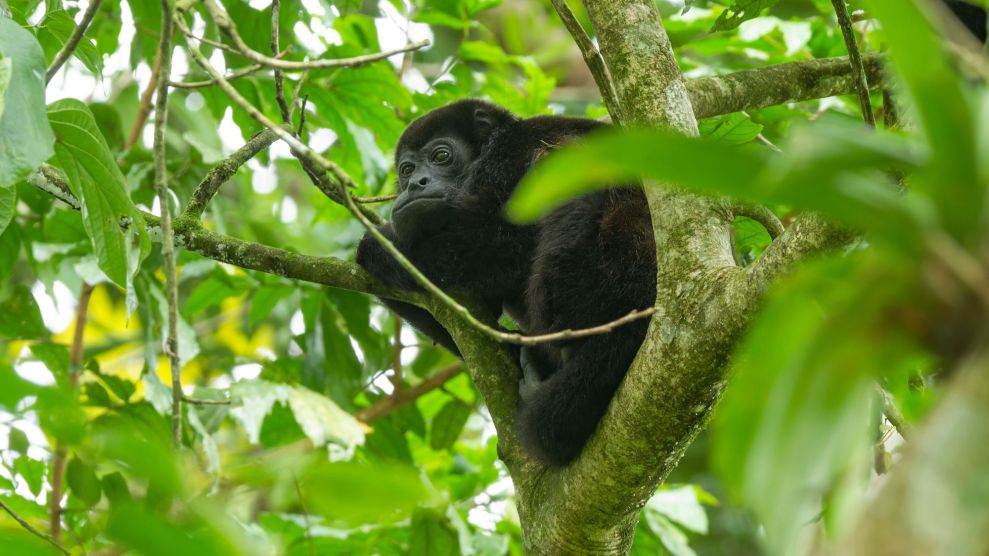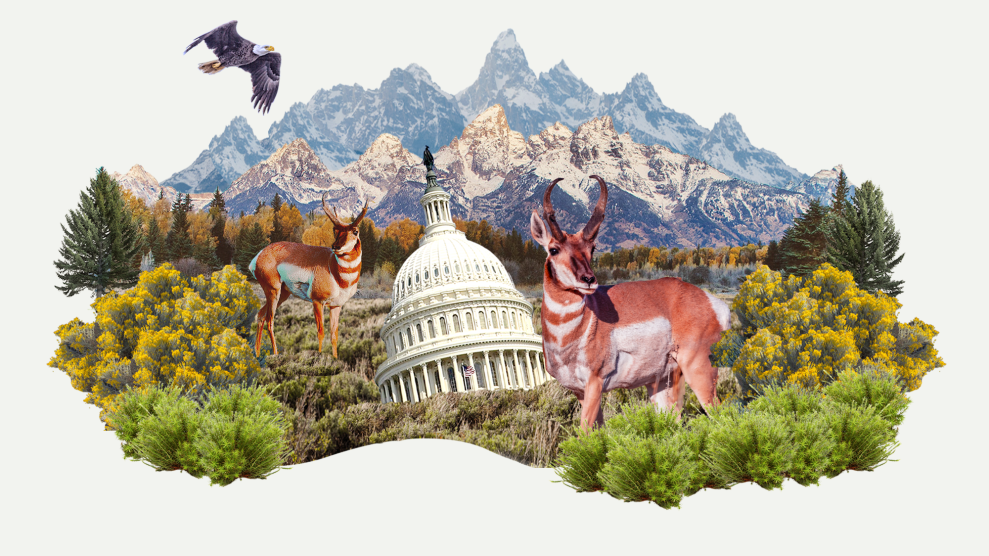
A Mantled Howler Monkey, which is listed as an endangered species by the US Fish & Wildlife ServicesJon G. Fuller/VW Pics/Zuma
This story was originally published by Inside Climate News and is reproduced here as part of the Climate Desk collaboration.
During former President Donald Trump’s time in office, his administration rolled back a variety of safeguards for wildlife and plants under the Endangered Species Act (ESA), a landmark species conservation law created in 1973.
On Thursday, the Biden Administration officially revived several of these rules, giving federal officials the go-ahead to reinstate certain protections for imperiled species across the US
“These revisions underscore our commitment to using all of the tools available to help halt declines and stabilize populations of the species most at-risk,” US Fish and Wildlife Service (USFWS) Director Martha Williams said in a statement.
The changes come against the backdrop of a global biodiversity crisis in which more than one-third of plants and animals are at risk of extinction due to habitat loss, climate change and other human impacts.
It’s been an uphill battle for proponents of a stronger ESA; the three-year process to unwind Trump’s rollbacks has faced steep bureaucratic hurdles and pushback from Republicans, which are only expected to continue now that the rules are finalized. And while environmental groups have lauded the positive impacts these updates could have, some say the ruling doesn’t go far enough.
The conservation vernacular can be confusing, but certain words are crucial for denoting the level of protection a species is provided by law. In the United States, wildlife and plants that are facing the highest risk of extinction are marked as “endangered” under the ESA, which means that it is illegal to kill them or destroy their critical habitat.
One step below this, species that “are likely to become endangered” are classified as “threatened,” according to the USFWS, which helps decide these designations. These terms may seem similar, but in 2019, the Trump administration removed a “blanket rule” included in the ESA that automatically extended the same level of protection for both classifications.
Additionally, Trump enacted a provision that allowed agencies to factor in economic impacts when deciding whether to list a species as threatened and endangered, such as by considering the loss in revenue from prohibiting logging in an area where an at-risk species resides. This opened the door to development projects in previously restricted areas, but also left many vulnerable species at risk, experts say.
Yesterday’s ESA update officially tucked threatened species back under its blanket, and re-inserted language in that prevents economic impacts from being considered in listing decisions. The Biden administration also introduced language that allows agencies to consider the threat of climate change in protections.
“The decision as far as whether or not species are endangered or threatened is, by law, supposed to be purely based in science and then you can address and consider the economic impacts later on,” Mike Leahy, a senior director of wildlife, hunting and fishing policy at the National Wildlife Federation, told me over the phone. “We’re really glad that the Fish and Wildlife Service and this administration are reinstating some of the protections for endangered and threatened species that had been removed by the last administration.”
However, the organization and several other environmental groups pointed out places in the ESA where they believe the Biden administration could have gone further. Industry groups have been outspoken in their opposition toward the updates, and a new round of lawsuits is expected to ensue in the coming year, reports the New York Times.
“The imposed Endangered Species Act restrictions are especially harmful to those, such as our farmer/rancher members, who depend on being able to produce their livelihoods through access to and use of natural resources,” the Nevada Farm Bureau Federation wrote in a comment to the proposed changes.
One of the main complaints among environmental groups surrounding yesterday’s ESA ruling surrounds something called an “environmental baseline.”
When federal agencies are issuing permits or making decisions that may affect a listed animal or plant, they are required to evaluate the potential impacts of that action. To do this, they use a species’ current habitat conditions and overall population health—or baseline—as a reference.
Under current ESA language, the baseline does not include the “consequences to listed species or designated critical habitat from ongoing agency activities or existing agency facilities that are not within the agency’s discretion to modify,” according to the Environmental Law and Policy Monitor. But what does that mean in practice?
“Imagine that the Service is consulting on the effects of new dam operations, and an existing dam has threatened salmon for decades. A future administration might say that, ‘Okay, the salmon have been threatened for decades. We don’t have to consider that anymore,” Bradley Williams, the deputy legislative director of wildlife and lands protection at the Sierra Club, told me. “That’s now basically status quo.”
As a result, it is not clear if projects that are currently having potentially adverse effects on endangered or threatened species will be reassessed under the new ruling.
Environmental groups also pointed out that the ESA update retains Trump-era language that requires federal actions to avoid jeopardizing species’ critical habitat “as a whole.” While this may sound all-encompassing, Leahy says that many species’ habitats are vast and this language could result in “piecemeal reduction” that could threaten their survival.
He adds that this could be particularly harmful for migratory species that require large swaths of land and sea to survive at different times in the year. “The services might allow something to be built in a migratory pathway here, and then a few miles down the road, something else impacts the migratory pathway and so over time, you might lose that migration,” he says.
Nearly half of internationally protected migratory species are headed toward extinction due to rapid population decline, according to a recent UN report, which my colleague Katie Surma wrote about in February.















